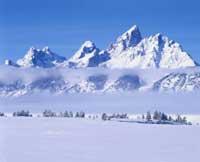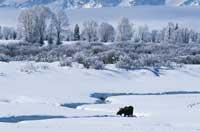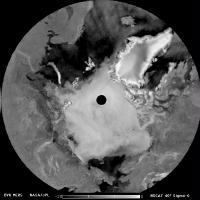In addition to the atmosphere, the sea is responsible for the glaciation
2001/03/30 Astobiza, Amaia

The theory of Milankovich says that about 115,000 years ago the insolation of early summer was low in the high latitudes, so the winter snow lasted also during the summer, which caused the formation of ice layers and the glaciation. However, in view of the bad results of the simulations carried out only taking into account the influence of the atmosphere, it seems that other factors are essential for the glaciation to occur, that is, the oceanic circulations and, to a lesser extent, the changes of the vegetation. Pulling this thread, French scientists have made a new attempt to simulate the glaciation taking into account the ocean-atmosphere pair and have concluded that the temperature of the surface of the sea also influenced the glaciation.
The simulation was performed using the orbital characteristics of the Earth at the time (eccentricity, obliquity, perihelion and integration time). These characteristics made that at that time the difference of insolation between stations was less than the current one, which affected the changes of temperature in the sea. The air temperature depends on instant solar radiation, that is, the air temperature responds quickly to the change of sunshine. On the contrary, the response of the sea surface is slower and takes longer to increase or decrease the temperature in 2-3 months. About 115,000 years ago the insolation in the northern hemisphere was 6% lower than the current one in summer. Consequently, the marine surface of the North Pole did not slow to warm up and the temperature gradient between the equator and the pole increased at that time of the year. Therefore, the influence of solar radiation and the coldest temperatures in the North Pole prevented the winter thaw.

Gai honi buruzko eduki gehiago
Elhuyarrek garatutako teknologia






